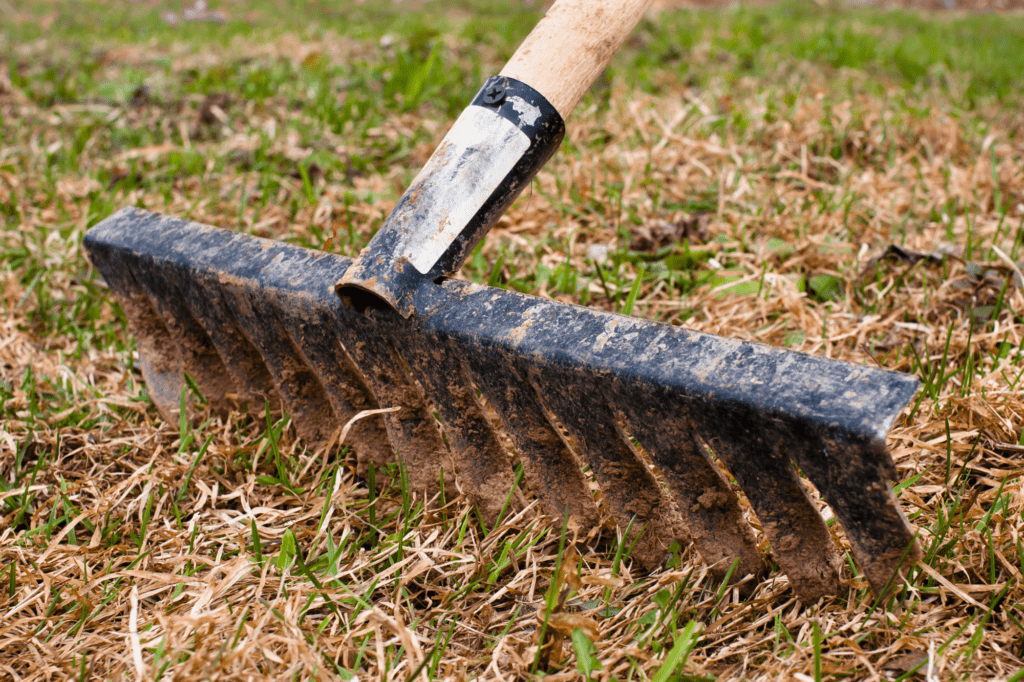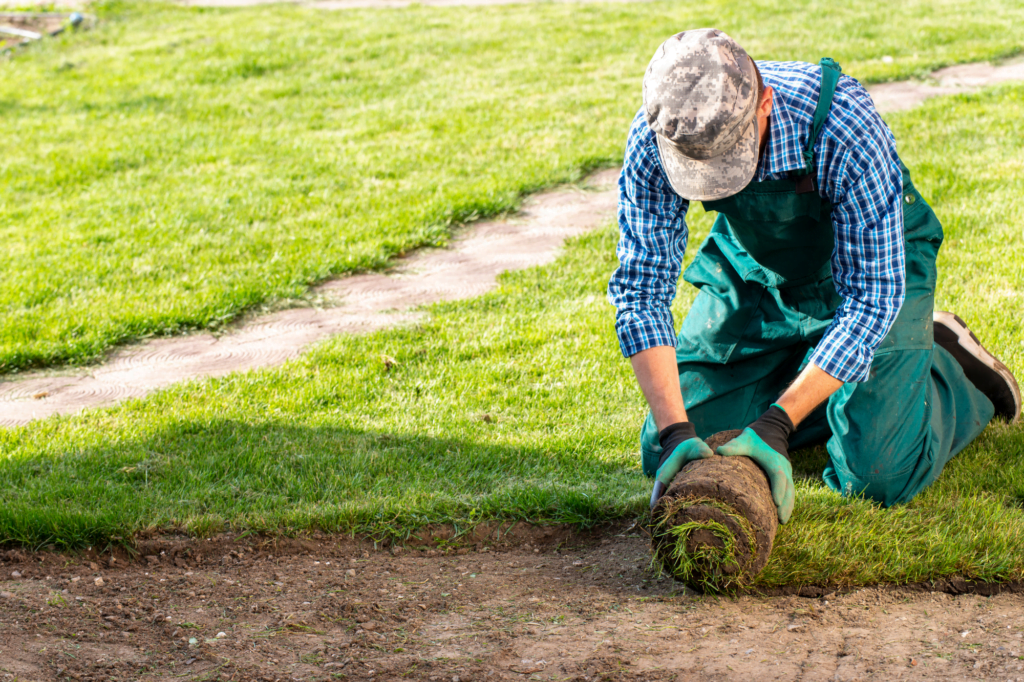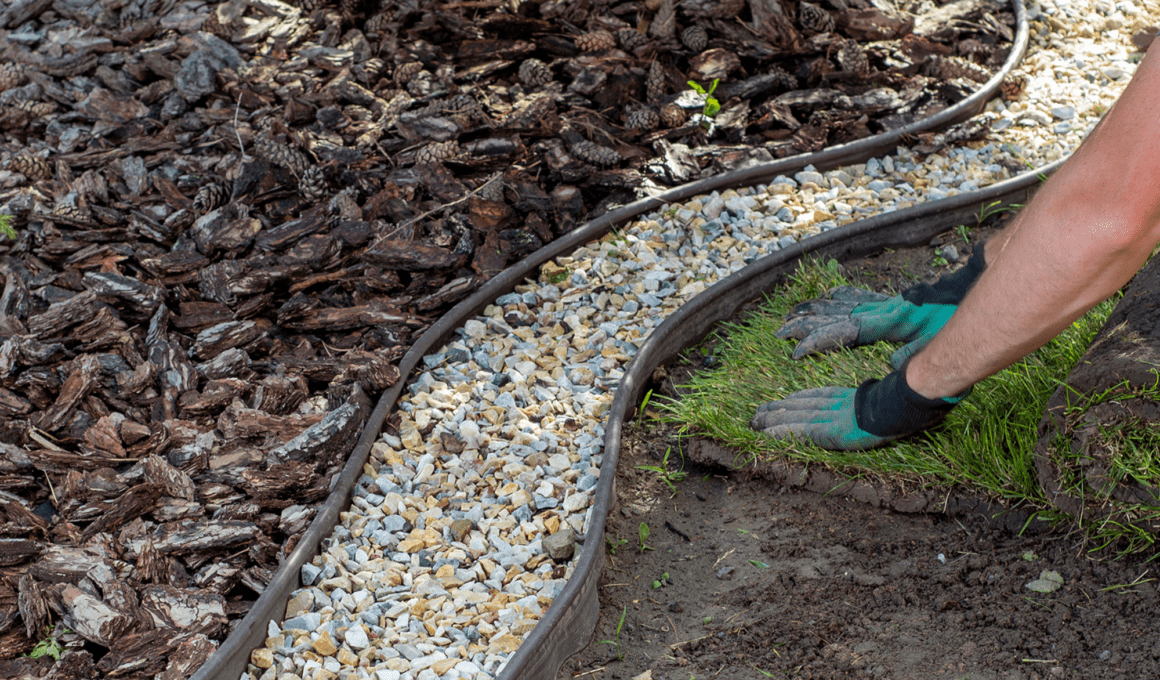Quick Summary
- Gather necessary tools and materials: shovel, rake, wheelbarrow, soil amendment, new turf
- Assess the condition of your lawn and determine if it needs a fresh start
- Remove obstacles and ensure proper drainage in your yard
- Remove old grass using digging and scraping techniques
Assess the Condition of Your Lawn
You’ll need to take a close look at your lawn to figure out if it’s salvageable or if you need to start fresh with new turf. Assessing the health of your lawn is crucial in determining the best method for removing the old grass and laying new turf. Start by examining the overall condition of the grass. Look for signs of damage such as bare patches, weeds, or diseases. If the majority of the grass is in poor condition, it may be best to remove it entirely and start from scratch. Next, inspect the soil beneath the grass. Check for compacted soil, which can prevent proper root growth and drainage. You can use a garden fork to poke small holes in the soil and see if it easily penetrates. If the soil is compacted, you may need to aerate it before laying new turf. In addition, consider the type of grass you currently have. Some types of grass may be more prone to diseases or require more maintenance than others. If your current grass is causing continuous issues, it may be wise to replace it with a more resilient variety. Once you have assessed the condition of your lawn, you can determine the best method for removing the old grass and laying new turf. Whether it’s through manual removal or using a mechanical sod cutter, make sure to follow proper safety guidelines to protect yourself during the process.Gather the Necessary Tools and Materials
First and foremost, make sure you have all the essential tools and materials ready for the task ahead. Gathering the necessary tools and materials is crucial to ensure a smooth and efficient process of removing old grass and laying new turf. Here is a table that provides a visual representation of the required items:| Tools | Materials | Safety Equipment |
|---|---|---|
| Shovel | Turf Rolls | Gloves |
| Garden rake | Topsoil | Knee pads |
| Wheelbarrow | Fertilizer | Safety glasses |
Prepare Your Yard for Grass Removal
Before diving into the process, it’s essential to get your yard ready for the exciting transformation that awaits. Follow these steps to prepare your yard for grass removal:- Mark your underground utilities: Before digging, locate and mark any underground utilities such as gas lines, water pipes, or electrical cables. This will prevent any accidents or damage during the yard excavation.
- Remove any obstacles: Clear your yard of any obstacles like rocks, tree branches, or debris that may hinder the grass removal process. This will ensure a smooth and safe excavation.
- Choose the right grass removal technique: Depending on the size of your yard and the type of grass, you can choose from various grass removal techniques. These include using a sod cutter, hand digging, or applying herbicides to kill the grass. Select the method that suits your needs and preferences.
Remove the Old Grass
Get ready to witness the incredible transformation of your yard as you dig into the task of completely eliminating the worn-out greenery. Removing the old grass is the first step towards creating a fresh and vibrant lawn. Before you begin, make sure to prioritize safety by wearing gloves, closed-toe shoes, and protective eyewear. Here are some effective grass removal techniques to get you started. One popular method is manual removal, which involves using a shovel or a turf cutter to physically lift and remove the old grass. Start by cutting the grass into manageable sections and then use the shovel to lift and remove it from the ground. Be sure to dig deep enough to remove the entire root system to prevent regrowth.
Another option is to use a sod cutter, which is a machine specifically designed for grass removal. This device cuts through the grass and roots, making it easier to lift and remove large sections of grass at once. Sod cutters can be rented from garden centers or equipment rental stores.
If you’re dealing with a larger area, you may want to consider using herbicides. These chemicals can effectively kill the grass, making it easier to remove. However, it’s essential to follow the instructions carefully and use herbicides responsibly to ensure the safety of yourself, your family, and the environment.
By employing these grass removal techniques, you’ll soon be on your way to a fresh, new lawn. Stay safe and enjoy the process of transforming your yard into a beautiful oasis.
One popular method is manual removal, which involves using a shovel or a turf cutter to physically lift and remove the old grass. Start by cutting the grass into manageable sections and then use the shovel to lift and remove it from the ground. Be sure to dig deep enough to remove the entire root system to prevent regrowth.
Another option is to use a sod cutter, which is a machine specifically designed for grass removal. This device cuts through the grass and roots, making it easier to lift and remove large sections of grass at once. Sod cutters can be rented from garden centers or equipment rental stores.
If you’re dealing with a larger area, you may want to consider using herbicides. These chemicals can effectively kill the grass, making it easier to remove. However, it’s essential to follow the instructions carefully and use herbicides responsibly to ensure the safety of yourself, your family, and the environment.
By employing these grass removal techniques, you’ll soon be on your way to a fresh, new lawn. Stay safe and enjoy the process of transforming your yard into a beautiful oasis.
Prepare the Soil for New Turf
Once the old grass has been completely eliminated, it’s crucial to ensure that you properly prepare the soil for the fresh and vibrant turf. Soil preparation is key to creating a healthy and long-lasting lawn. Start by removing any remaining weeds or grass roots from the soil. Use a garden fork or a tiller to break up the compacted soil and improve its drainage. This will allow the new turf to establish its roots more easily. Next, add organic matter to the soil to improve its fertility and structure. Spread a layer of compost or well-rotted manure over the area and use a rake to work it into the top few inches of soil. This will provide essential nutrients for the new turf to thrive. It’s important to level the soil before laying the new turf. Use a lawn roller or a heavy plank of wood to press down the soil and create a smooth surface. This will prevent any uneven areas that could cause water pooling or tripping hazards. Water the soil thoroughly before laying the new turf. This will help settle the soil and provide a moist environment for the new grass to take root. By properly preparing the soil, you’re setting the foundation for a beautiful and healthy lawn.What Are Some Temporary Outdoor Flooring Options That Can Be Used When Installing New Turf?
When installing new turf, it’s important to consider temporary outdoor flooring options. These solutions provide a solid foundation while protecting the turf from heavy foot traffic or equipment. Some popular choices include interlocking tiles, modular decking, and roll-out mats. These options offer durability, ease of installation, and can be easily removed once the turf is established.
Choose and Install New Turf
Now that you’ve prepared the soil for your new turf, it’s time to choose and install the perfect grass for your lawn. Selecting the appropriate turf is crucial for achieving a lush and healthy lawn. Consider factors such as the amount of sunlight, soil type, and maintenance requirements when choosing the right turf variety for your yard. Take the time to research and consult with experts to make sure you make the best decision. Once you’ve selected the turf, it’s important to follow proper installation techniques to ensure its success. Start by preparing the soil, making sure it’s level and free from any debris. Lay the turf rolls tightly together, staggering the joints like a brick pattern. Use a sharp knife to cut the turf to fit around any obstacles or edges.
After the installation, water the turf thoroughly to promote root growth and settle the soil.
Remember, safety is always a priority when working in your yard. Here are some important reminders:
Once you’ve selected the turf, it’s important to follow proper installation techniques to ensure its success. Start by preparing the soil, making sure it’s level and free from any debris. Lay the turf rolls tightly together, staggering the joints like a brick pattern. Use a sharp knife to cut the turf to fit around any obstacles or edges.
After the installation, water the turf thoroughly to promote root growth and settle the soil.
Remember, safety is always a priority when working in your yard. Here are some important reminders:
- Wear appropriate protective gear, like gloves and knee pads, to prevent injuries.
- Use sharp tools properly and handle them with care to avoid accidents.
- Take breaks and stay hydrated to avoid exhaustion.
Water and Care for Your New Lawn
After you’ve chosen and installed your perfect turf, it’s essential to ensure proper watering and care to nurture your new lawn. Following a watering schedule and implementing regular lawn maintenance will help your turf establish strong roots and thrive. To ensure your new lawn gets the right amount of water, it’s important to establish a watering schedule. During the first few weeks, water your lawn daily to keep the soil consistently moist. Gradually reduce the frequency to every two to three days as the turf establishes. Be mindful not to overwater, as this can lead to shallow root growth and weak grass. Proper lawn maintenance is crucial for the health of your new turf. Regularly mow your lawn to maintain an optimal height of around 2-3 inches. Avoid cutting more than one-third of the grass blade length at a time to prevent stress on the turf. Additionally, remove any weeds that may appear to prevent them from competing with your new grass for nutrients and water. To help you keep track of your watering schedule and lawn maintenance tasks, here is a helpful table:| Day of the Week | Watering | Mowing |
|---|---|---|
| Monday | ||
| Tuesday | ||
| Wednesday |









